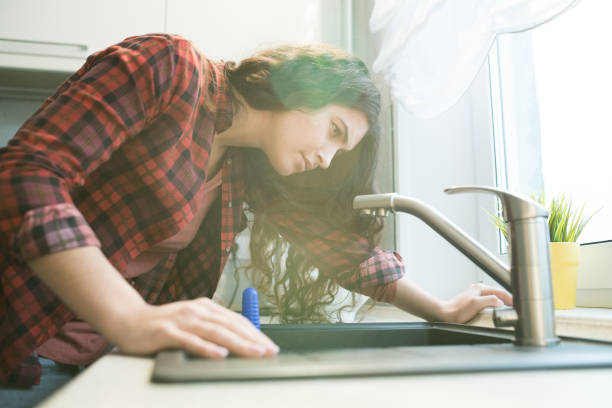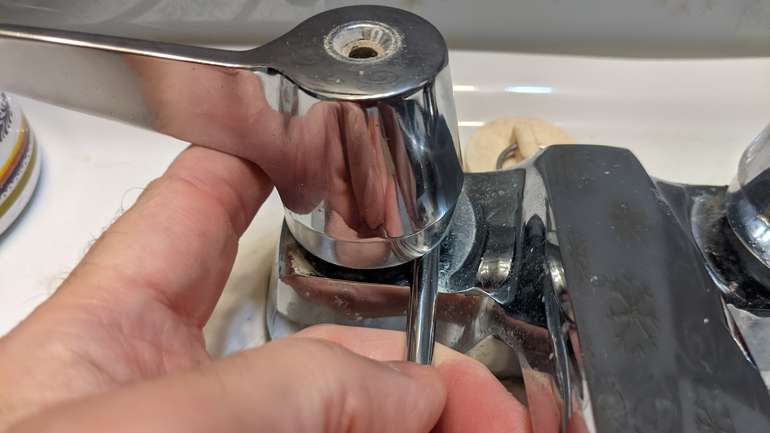Uncovering the Significance of Correcting a Leaking Faucet
Uncovering the Significance of Correcting a Leaking Faucet
Blog Article
Just how do you really feel with regards to Leaky Faucets: Why They Happen & What to Do About Them?

Trickling taps could look like a small hassle, yet their impact surpasses simply the annoyance of the audio. From wasting water to incurring unneeded economic expenses and wellness dangers, ignoring a dripping tap can lead to different consequences. In this short article, we'll look into why it's essential to resolve this common family concern without delay and effectively.
Wastage of Water
Environmental Impact
Leaking taps add dramatically to water waste. According to the Epa (EPA), a single tap leaking at one drip per second can throw away more than 3,000 gallons of water annually. This not just stress water sources however likewise influences ecosystems and wild animals dependent on them.
Financial Expenses
Boosted Water Expenses
Past the environmental influence, leaking taps can inflate water costs significantly. The accumulated waste in time converts into greater energy costs, which could have been prevented with timely repairs.
Possible Residential Property Damages
Furthermore, long term dripping can result in damage to fixtures and surface areas bordering the tap. Water accumulation can cause discoloration, deterioration, and also structural concerns if left neglected, causing extra fixing prices.
Health and wellness Worries
Mold and Mildew Development
The continuous presence of dampness from a leaking faucet develops an excellent environment for mold and mildew growth. These fungis not just jeopardize interior air top quality but likewise present health dangers, especially for people with respiratory problems or allergic reactions.
Waterborne Conditions
Stagnant water in dripping taps can come to be a breeding ground for germs and other pathogens, boosting the danger of waterborne diseases. Impurities such as Legionella bacteria thrive in stationary water, potentially causing major diseases when ingested or breathed in.
Do it yourself vs. Specialist Repair service
Benefits and drawbacks of Do It Yourself Repair Work
While some may try to take care of a trickling faucet themselves, DIY repairs include their own collection of difficulties. Without appropriate understanding and tools, DIY attempts can intensify the concern or result in insufficient fixings, prolonging the trouble.
Advantages of Working With a Specialist Plumber
Hiring an expert plumber makes certain that the underlying reason for the dripping faucet is addressed effectively. Plumbing professionals possess the expertise and tools to detect and repair tap concerns effectively, conserving time and minimizing the threat of further damages.
Step-by-Step Overview to Fixing a Dripping Faucet
Tools Called for
Before attempting to deal with a dripping faucet, collect the required tools, consisting of an adjustable wrench, screwdrivers, substitute parts (such as washers or cartridges), and plumber's tape.
Usual Faucet Issues and Their Solutions
Determine the type of faucet and the certain problem triggering the drip. Usual issues include worn-out washing machines, rusty shutoff seats, or malfunctioning O-rings. Refer to manufacturer directions or on-line tutorials for detailed assistance on repairs.
Safety nets
Regular Maintenance Tips
To stop trickling taps, do routine maintenance such as cleaning up aerators, evaluating for leaks, and replacing damaged parts promptly. Furthermore, consider installing water-saving gadgets or upgrading to extra efficient components.
Value of Prompt Repairs
Addressing leaking faucets as soon as they're seen stops additional water wastage and prospective damages, inevitably conserving both water and money in the long run.
Effect On Home Value
Assumption of Well-Maintained Residential Property
Preserving a residential or commercial property in good condition, consisting of dealing with maintenance issues like leaking taps, enhances its viewed value and desirability amongst potential purchasers or renters.
Impact on Resale Value
Qualities with well-maintained plumbing components, consisting of faucets, command greater resale values in the realty market. Resolving trickling taps can add to a favorable impact during residential property inspections and negotiations.
Environmental Duty
Specific Payment to Conservation
Taking responsibility for repairing dripping taps lines up with wider efforts towards water preservation and ecological sustainability. Every person's actions collectively make a significant influence on maintaining priceless sources.
Sustainable Living Practices
By focusing on punctual fixings and taking on water-saving practices, individuals add to lasting living practices that benefit both present and future generations.
Verdict
Dealing with a leaking tap exceeds mere comfort; it's an essential action toward conserving water, lowering economic costs, and guarding health and building. Whether via DIY fixings or specialist help, taking action to repair trickling faucets is a tiny yet impactful method to advertise accountable stewardship of resources and add to a much healthier, a lot more sustainable future.
How to Fix a Dripping or Leaky Faucet
A leaking faucet is one of the most common problems that homeowners encounter, but it being commonplace doesn’t make it any less annoying. The constant drip drip drip of a leaking bathtub faucet, showerhead, or sink tap can disturb your home’s serenity. Left neglected, a dripping faucet can also result in higher water bills and discoloration or mold growth in your sink or plumbing fixtures.
Fortunately, you don’t have to be a trained plumber to know how to stop a dripping faucet. With some basic tools, replacement parts, and a little patience, leaky faucet repair is a breeze. In this article, we’ll explain what causes dripping faucets and how you can fix them.
What Causes a Leaking Faucet?
Kitchen and bathroom faucets come in all manner of designs, but most involve some combination of valves, O-rings, seals, and washers. The O-ring is usually the weakest link, but any one of these pieces can wear down over time. Heat, moisture, temperature fluctuations, minerals, mold, and movement can contribute to warping and corrosion, breaking the watertight seal. This just comes with the territory of being a homeowner. Everything is always subject to wear and tear, and some component parts of your appliances and fixtures need to be replaced on occasion. At least replacement O-rings are cheap!
More rarely, dripping faucets can be a symptom of excessively high water pressure. Were this the case in your home, you would probably notice that the leak is not isolated to one faucet. Water pressure issues are harder to resolve on your own. We recommend contacting a professional plumber if you suspect your water pressure is too high.
How to Fix a Dripping Faucet
Pipe wrench or monkey wrench Allen wrench set Screwdrivers Old towel or rag Shut off the water.
Before you do anything, you need to turn off the water to keep from drenching your kitchen or bathroom. You should find a valve under the sink and against the wall. Once you’ve turned this valve, try turning the faucet on to confirm that the water source has been cut off.
If you can’t locate your local valve for the faucet you’re working on, you can always shut off the water to the house at the main valve. Of course, this will prohibit anyone from using the sinks, showers, or toilets while you’re working on the faucet that’s giving you trouble.
Plug or block the drain.
You’ll be disassembling the faucet and removing some small bits of hardware. Plug the drain with a stopper or rag to avoid the possibility of a small screw falling into your P-trap.
Take apart the faucet assembly.
There are several varieties of kitchen and bathroom faucets, each with its own manner of assembly. For detailed instructions on how to disassemble your faucet, you can refer to the fixture’s manual or contact the manufacturer. If you know whether you have a ball, disc, cartridge, or compression faucet, you can find detailed schematics online.
In general, you need to begin by removing the faucet handles. You might notice a small screw that you’ll need to remove with a screwdriver or Allen wrench. If you don’t see any visible securing hardware, it’s likely hidden under a decorative cap that can be unscrewed or popped off with flathead screwdriver.
Remove each piece methodically, consulting a schematic when necessary. Take notes or arrange the pieces in such a way to make it easier to correctly reassemble the faucet later.
Remove the cartridge.
Once you’ve removed the handles and securing hardware, you should be able to remove the valve cartridge or stem. Some cartridges will slide right out. Other faucet models will require you to loosen a nut with a pipe wrench before you can remove the valve stem.
Examine the exposed hardware.
With the cartridge or stem removed, inspect the component parts. Check the rubber O-rings for wear and tear. Also examine the seat washer for corrosion or other damage. These pieces are usually the responsible parties for a dripping faucet, but it’s worth inspecting the other component parts while you have the faucet disassembled.
Find replacement parts.
Once you’ve identified which faucet component has failed, find an identical replacement. Your local hardware store should have O-rings, seat washers, and other standard components in stock. If you have a luxury or uncommon faucet, you may have to contact the manufacturer for a replacement part.
It’s a good idea to take your old parts with you to the hardware store so you can compare them with the store’s inventory and be sure you’re purchasing the correct replacement.
Reassemble the faucet.
With your new parts in hand, reconstruct the faucet and handles. Don’t be tempted to overtighten screws or nuts. You might think this could create a better seal, but it can instead damage or bend a delicate part of the assembly and create a new problem for you.
Turn on the water and test the faucet.
The only thing left to do is test your work. Unplug the sink, turn the water back on, and try the faucet. Congratulate yourself on a job well done!
https://www.libertyhomeguard.com/how-to-fix-a-dripping-or-leaky-faucet/

I stumbled upon that review on Leaky Faucets: Why They Happen & What to Do About Them when looking around the search engines. I beg you set aside a second to distribute this article if you enjoyed it. I truly appreciate your readership.
Report this page